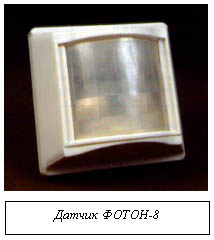|
«I noticed that night recordings from IP cameras take up significantly more disk space compared to daytime recordings. In theory, it should be the other way around: my cameras show significantly more movement in the frame during the day than at night. Why is this happening? – Alexander KONOBEEVSKY, Volgograd»
Dmitry NIKOLSKY, brand manager of video surveillance systems «Bosch Security Systems» answers the reader's question
Indeed, you are right. Modern IP cameras usually use codecs with interframe compression MPEG4 or the newer H.264. In theory, static scenes are compressed by such codecs more effectively than scenes with a lot of movement in the frame.
In practice, their effectiveness also depends on other image parameters. First of all, image noise has a big impact when the object of observation is not illuminated enough. This is what appears on the monitor as colored or black-and-white dots that randomly appear throughout the frame. For the compression algorithm, noise is also movement, and thus a static but noisy image turns into a dynamic scene that requires more network traffic and more disk space to record. You are probably dealing with exactly this effect.
How to combat this? Many modern cameras have a network traffic limitation mode. This mode allows the camera to choose the most appropriate bitrate at a particular moment in time, without exceeding the explicitly specified maximum permissible value. If the camera has such a mode, it should, of course, be used. Some difficulty in this case is choosing the maximum permissible bitrate value. This is a question of compromise between quality and necessary resources. However, using this mode, at least you can more accurately plan disk space and not go beyond the permissible quota.
Another and, in my opinion, more correct approach is to fight not the effect, but the cause of the phenomenon, i.e. to reduce the noise level of the image. First of all, this is the use of additional illumination of the object of observation. Firstly, it simply improves the quality of video recordings. Secondly, it naturally reduces the noise level, and therefore both network traffic and disk space requirements.
Illumination can be carried out by both conventional spotlights and infrared ones, if for one reason or another «extra» visible light is unacceptable. It is only worth keeping in mind that in the case of infrared lighting, the camera must be sensitive in the IR range.
The choice of spotlight also requires attention. It is advisable to use floodlights, the so-called even illumination. Such spotlights allow you to more evenly illuminate the entire area of the frame, while a conventional spotlight gives a concentrated beam in the center of the frame and leaves the periphery in the dark, where noise inevitably appears again.
|


Добавить комментарий